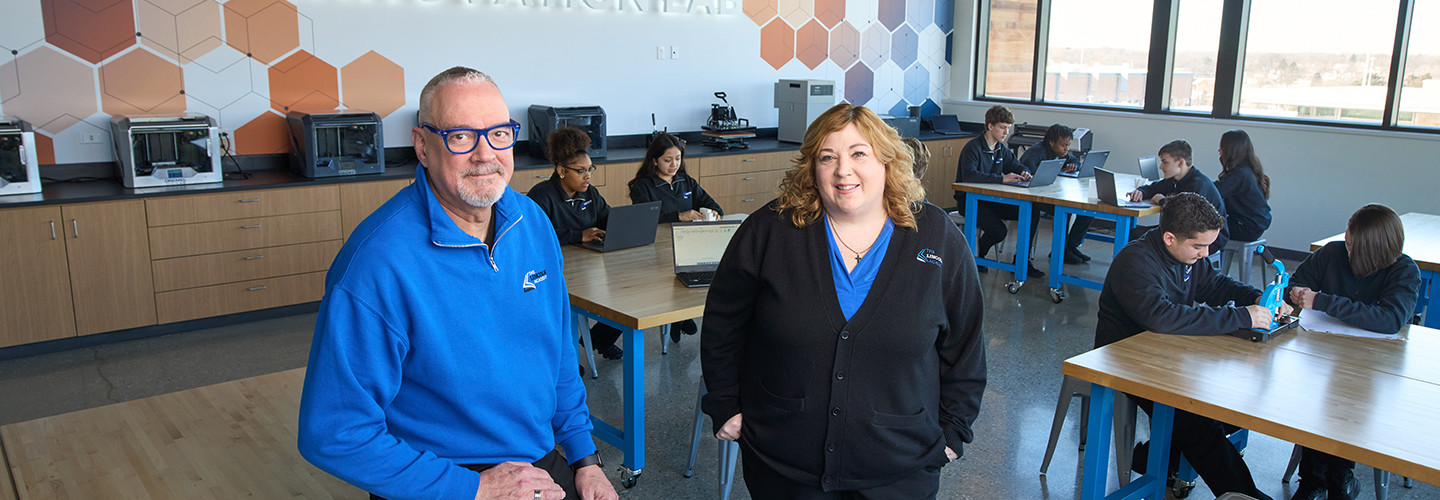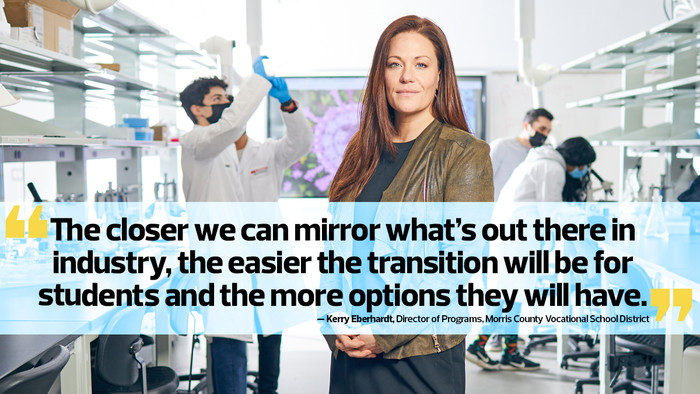“The health system’s CEO has been actively involved in supporting the school,” says Kristi Cole, chief education officer at The Lincoln Academy. “They need skilled employees, so they’d love to see certified nursing assistants coming out of the academy.”
In fact, among The Lincoln Academy’s 17 specially designed labs and learning spaces is its medical services lab, complete with a real ambulance. “Along with a learning track for CNAs, we have an EMT who trains our middle and high school scholars,” Cole says.
The school also includes an agricultural sciences lab complete with a “fork farm” wall of vertically integrated pots for growing hydroponic produce; an innovation lab with 3D printers, heat presses, vacuum formers and vinyl cutters; a recording studio with a green screen and sound booth; and a pair of computer labs where students learn about cybersecurity, coding and IT.
The Lincoln Academy even won a Technology Education and Literacy in Schools grant from Microsoft Philanthropies to support its computer science program and allow students to graduate with an IT specialist certificate.
“We’ve also created a room we call Chrome Depot,” Cole says, “where students will learn to repair their own Chromebooks.”
Taken together, the 115,000-square-foot Lincoln Academy looks like it could be part of a college campus or the headquarters of a tech startup: windows everywhere, moveable walls, ubiquitous flat-panel displays, collaborative technology and small group instruction rooms (much like today’s corporate huddle spaces).
“We created a place where our scholars can see what’s going on, feel like they’re a part of the action and get excited about learning,” says Cole.
WATCH THE VIDEO: 3D printers and hydroponics build confidence in students with disabilities.
K–12 STEM Education Evolves Alongside Technology
The Lincoln Academy is not alone in providing its students with innovative STEM classrooms. More schools are taking advantage of new technology to make STEM learning more real for students, which bodes well for the future STEM workforce.
“Coming out of the pandemic, schools have more connectivity and access to technology than they did before, which has been a silver lining for STEM education,” says Carolyn Sykora, senior director of standards programs at the International Society for Technology in Education. “The impact of technology on labs is significant. It helps bring more hands-on, experimental learning to schools.”
Sykora says that before schools adopted more technology, STEM education tended be very siloed. “Students would perform an activity, but it wasn’t connected to any other content,” she says.
New approaches to project-based learning have changed that, Sykora says. So has access to troves of digital information and collaboration systems that bring real-world experts right into schools. “A class I know designed a project to preserve oyster populations in the Chesapeake Bay in Maryland, working with data from a local nonprofit and using computational thinking to identify where to build oyster castles,” Sykora explains. “This is where STEM education is moving: toward problem-solving, experimentation, experience and hands-on learning.”
On a recent school day at The Lincoln Academy, Director of Technology Marc Anderson was helping students solve a problem using tech tools that students probably wouldn’t have had access to years ago. “We were in the robotics lab troubleshooting some issues they were having getting their bots to connect with their Chromebooks,” Anderson explains. “It’s amazing what they’re doing.”













